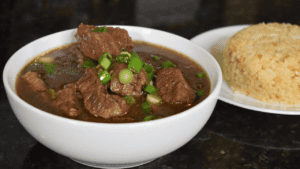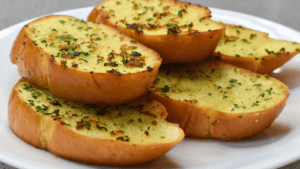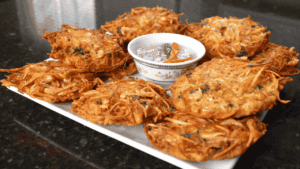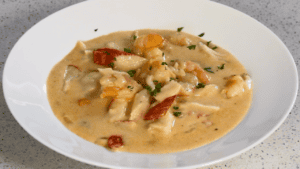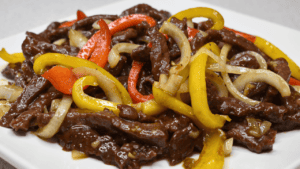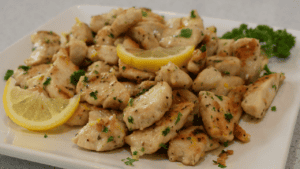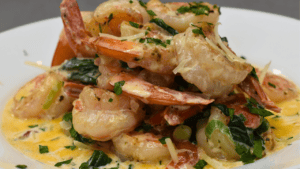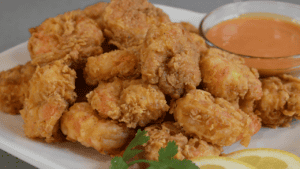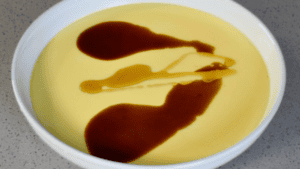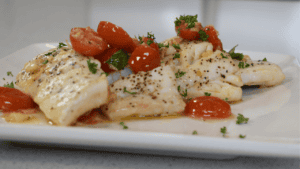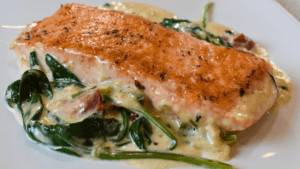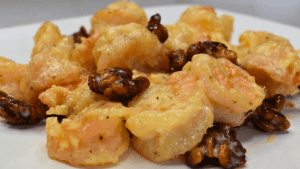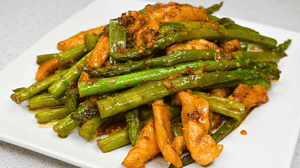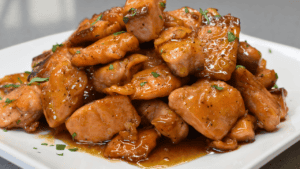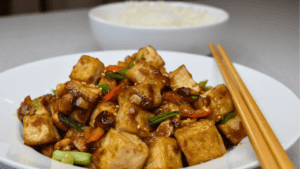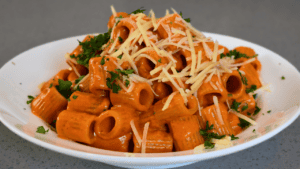Shrimp Tempura
Shrimp tempura is a popular Japanese dish that consists of battered and deep-fried shrimp. The shrimp is typically coated in a light batter made from flour, egg, and water before being fried to a golden crisp.

Mastering Shrimp Tempura at Home
If you’re a fan of Japanese cuisine or simply love indulging in crispy, golden-fried delicacies, shrimp tempura is likely on your culinary radar. This classic dish, celebrated for its delicate batter and succulent shrimp, has captured the hearts and taste buds of food enthusiasts worldwide. But what exactly makes shrimp tempura so special, and how can you recreate it at home? In this blog, we’ll explore the essentials of crafting the best shrimp tempura recipe, perfect for home cooks and seafood enthusiasts alike. From understanding its rich history to mastering the art of the ideal batter, we’ll guide you through every step of this delightful culinary adventure.
The Allure of Shrimp Tempura
Originating from Japan, tempura is a renowned method of cooking that dates back centuries. The technique was introduced to Japan by Portuguese missionaries in the 16th century and has since evolved into a staple of Japanese cuisine. Today, shrimp tempura is one of the most beloved variations, revered for its light, crisp texture and the succulent flavor of the shrimp within. Its popularity has transcended borders, becoming a favorite among seafood lovers worldwide.
The appeal of shrimp tempura lies in its simplicity and the contrast it offers. A well-made tempura features a delicate, airy batter that crisps up perfectly around juicy shrimp. This combination creates a satisfying bite, making it a sought-after appetizer or main course option. For those new to Japanese cuisine, shrimp tempura serves as an accessible introduction with its familiar flavors and textures.
Shrimp tempura is often celebrated for its versatility. While traditionally served with a dipping sauce like tentsuyu, it can also be paired with various side dishes or incorporated into sushi rolls. The adaptability of shrimp tempura makes it a fantastic choice for home cooks looking to impress their guests with minimal effort.
Your Guide to Essential Ingredients
The key to phenomenal shrimp tempura lies in selecting the right ingredients. Every element plays a crucial role, from the shrimp to the batter components. Understanding what makes these ingredients harmonious is the first step toward culinary success.
Let’s start with the shrimp. Opt for fresh, large shrimp to ensure a succulent and juicy interior. Look for shrimp that are firm to the touch and have a mild sea scent. If fresh shrimp aren’t available, high-quality frozen shrimp will also do the trick. Just be sure to thaw them completely before use.
Now, let’s talk about the batter. The main components include all-purpose flour, cornstarch, an egg, and water. Flour and cornstarch work together to create a batter that is both light and crispy. The egg adds richness, enhancing the flavor profile of the batter. Water, preferably cold, is the final ingredient that binds everything together, helping achieve that perfect tempura texture.
The cooking oil is yet another crucial ingredient. Opt for a neutral oil with a high smoke point, such as vegetable or canola oil. This ensures that the tempura fries evenly and retains its crispiness without absorbing excess oil.
Crafting the Perfect Tempura Batter
Creating the ideal tempura batter is an art form in itself, but fear not! With the right guidance, you can master it at home. The perfect batter requires careful preparation, focusing on texture and consistency to deliver that iconic tempura finish.
Start by whisking together 1 ½ cups of all-purpose flour and ½ cup of cornstarch in a mixing bowl. These dry ingredients serve as the foundation for your batter. In a separate bowl, lightly beat one large egg, then add one cup of cold water. The temperature of the water is vital—it should be as cold as possible to maintain the batter’s lightness.
Gradually combine the wet and dry ingredients, stirring gently to form the batter. Be mindful not to overmix; some lumps are perfectly acceptable. Overmixing can lead to a dense batter, compromising the delicate texture you’re aiming for. The result should be a slightly lumpy batter with a consistency similar to heavy cream.
To keep the batter cold while frying, place the mixing bowl over an ice bath. This ensures the batter remains at the optimal temperature throughout the cooking process, allowing for an even, crisp fry.
Achieving Light and Crispy Results
The hallmark of superb shrimp tempura is its light and crispy coating. To achieve this, certain techniques can be employed to elevate your frying prowess.
First, make sure your oil is adequately heated before you begin frying. Aim for a temperature of around 350°F (175°C). Use a kitchen thermometer to ensure accuracy, as oil that’s too hot or cool can affect the final texture of your tempura. Maintaining the right temperature keeps the batter from soaking up excess oil, ensuring a crisp outcome.
Before dipping the shrimp into the batter, lightly coat each one in flour. This helps the batter adhere more effectively, resulting in an even, crispy coating. Once coated in flour, immerse each shrimp into the batter, ensuring it’s fully covered.
When frying, avoid overcrowding the pot or pan. Fry the shrimp in small batches to maintain the oil’s temperature and allow for even cooking. Fry each shrimp for approximately three minutes per side until they turn a beautiful golden brown. If you desire extra crunch, sprinkle some batter over the shrimp while they’re frying.
Creative Twists on Classic Shrimp Tempura
While traditional shrimp tempura is always a delight, adding creative twists can make it even more exciting. Experimenting with variations allows you to tailor the dish to your preferences and impress your guests with unique, flavorful combinations.
Consider incorporating different spices or herbs into your batter for a unique flavor profile. Adding a touch of garlic powder or paprika can lend a delightful kick, while fresh herbs like parsley or cilantro can introduce an aromatic element to the dish.
Another variation to explore is using panko breadcrumbs for added texture. After dipping the shrimp in the batter, roll them in panko breadcrumbs before frying. This extra step gives the shrimp a delightful crunch that stands out on the plate.
For those who appreciate a touch of sweetness, consider drizzling honey or maple syrup over the freshly fried shrimp. This sweet-savory combination creates a tantalizing flavor experience that will have your taste buds dancing.
Serving Suggestions and Perfect Pairings
Once you’ve mastered the art of preparing shrimp tempura, it’s time to think about presentation and accompaniments. Serving suggestions and pairings can enhance the dining experience, elevating the dish beyond a mere appetizer.
One classic accompaniment to shrimp tempura is a dipping sauce. Tentsuyu, a traditional Japanese dipping sauce made with dashi, soy sauce, and mirin, is a popular choice. Its savory depth enhances the flavors of the shrimp and batter, creating a harmonious balance.
Beyond dipping sauces, consider serving shrimp tempura alongside steamed rice for a complete meal. The light, fluffy texture of the rice pairs beautifully with the crispy shrimp, creating a satisfying combination.
For a refreshing side, prepare a simple cucumber salad dressed with rice vinegar and sesame seeds. The cool, crisp cucumbers provide a contrast to the warm, crispy tempura, adding a burst of freshness to each bite.
Healthier Options for Cooking
While traditional shrimp tempura is deep-fried, there are healthier alternatives for those looking to enjoy this dish with fewer calories. Baking or air frying provides a lighter option without sacrificing flavor or texture.
To bake shrimp tempura, preheat your oven to 425°F (220°C) and line a baking sheet with parchment paper. Arrange the battered shrimp on the sheet, leaving space between each piece. Lightly spray the shrimp with cooking oil to promote even browning. Bake for approximately 10-12 minutes, flipping halfway through, until the shrimp are golden and crisp.
Air frying is another excellent option for health-conscious individuals. Preheat your air fryer to 400°F (200°C) and place the battered shrimp in a single layer inside the basket. Cook for 8-10 minutes, shaking the basket halfway through to ensure even cooking.
Both baking and air frying offer a healthier alternative to traditional frying, allowing you to enjoy shrimp tempura guilt-free.
Conclusion
Now that you’ve learned the secrets to crafting the best shrimp tempura at home, it’s time to put your newfound knowledge into practice. Shrimp tempura is a delightful dish that offers a perfect balance of crispy texture and succulent flavor. Whether you’re a seasoned home cook or a seafood enthusiast eager to expand your culinary skills, mastering shrimp tempura is a rewarding endeavor.
We encourage you to try the recipe and share your experiences with us. Join our community of fellow food lovers and exchange tips, tricks, and creative twists on this classic dish. Feel free to leave feedback, ask questions, and share your successes on social media.
Frequently Asked Questions
What is the secret to perfect tempura?
The secret to perfect tempura lies in maintaining a cold batter and ensuring the oil is at the correct temperature. Cold batter prevents gluten formation, resulting in a light, airy texture. Properly heated oil ensures even frying and prevents sogginess.
What is the cooking method of tempura?
Tempura is traditionally cooked through deep frying. This involves immersing the battered ingredients in hot oil until they turn golden brown and crispy. The high heat ensures a quick cook time, preserving the tenderness of the shrimp inside.
Why is my shrimp tempura not crispy?
If your shrimp tempura isn’t crispy, it could be due to the batter being too thick or the oil temperature being too low. Ensure the batter has a thin consistency and that the oil is heated to the recommended temperature for optimal crispiness.
How to make shrimp straight for shrimp tempura?
To keep shrimp straight for tempura frying, insert a skewer through the length of each shrimp before battering and frying. This prevents curling during cooking and results in an elegant presentation.
What is shrimp tempura made of?
Shrimp tempura consists of large shrimp coated in a batter made from all-purpose flour, cornstarch, egg, and water. The shrimp are then deep-fried in hot oil until crispy and golden.
How to cook tempura shrimp in the oven?
To cook tempura shrimp in the oven, preheat to 425°F (220°C), arrange the battered shrimp on a lined baking sheet, and lightly spray with cooking oil. Bake for 10-12 minutes, flipping halfway through, until the shrimp are golden and crispy.
How is shrimp tempura different from fried shrimp?
Shrimp tempura differs from traditional fried shrimp in its batter composition and texture. Tempura batter is lighter and airier, resulting in a delicate, crispy coating, whereas traditional fried shrimp often have a thicker, breaded coating.
More Delicious Recipes You’ll Love
- Creamy Tuscan Salmon Recipe – A mouth-watering Italian dish that combines the richness of cream sauce with the delicate flavor of salmon. The dish originated in Tuscany, a region known for its exquisite cuisine and culinary traditions.
- Chicken Tenders – Chicken tenders, also known as chicken fingers or chicken strips, are a classic fast food dish that originated in the United States. They consist of small strips of chicken meat that are typically battered and fried.
- Garlic Butter Shrimp – Delicious and flavorful seafood dish that can be made with ease at home. The recipe combines succulent shrimps, butter, garlic, and various herbs and spices to make a delightful meal.
- Baked Salmon – Delicious and healthy dish that combines the delicate flavors of fresh salmon with the rich and aromatic seasonings of various herbs and spices.
- Rissoto – Creamy and flavorful Italian dish made from arborio rice, broth, parmesan cheese, butter, and various other ingredients.
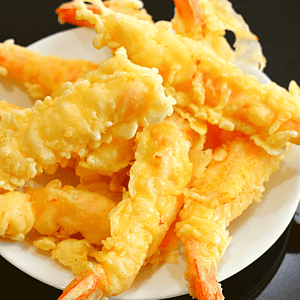
Shrimp Tempura
Ingredients
- 1 lb shrimp peeled and deveined tail on
- ½ cup all-purpose flour plus 1 cup for dredging shrimp
- ½ cup cornstarch
- 1 large egg
- 1 cup water
- 2 cups cooking oil for frying
- salt to taste
Instructions
- In a mixing bowl, whisk together flour, cornstarch, egg, and water until well combined.
- Heat oil in a pot over medium heat.
- Coat each shrimp in flour and then dip it into the batter.
- Fry each shrimp for 3 minutes on each side until golden brown and crispy.
- Sprinkle extra batter onto the shrimp for an extra crunch.
